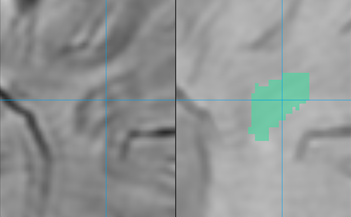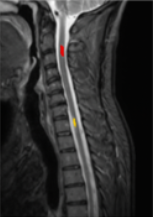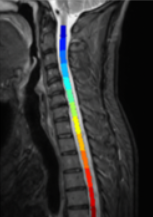A primary objective of CLAIMS is to develop tools that enhance the monitoring of disease progression in patients with Multiple Sclerosis. In this regard, the team working on Work Package 4 aims to develop, validate, and implement novel MRI image analysis pipelines to more effectively distinguish between active inflammation and smouldering pathology in Multiple Sclerosis patients.
As MRI biomarkers for active inflammation are relatively well established, with reliable tools for their monitoring available commercially, our focus is on enabling the quantitative analysis of MRI images to detect signs of smouldering pathology—an aspect not yet routinely addressed in clinical practice.
In the first year of the project, CLAIMS has made substantial progress in the development of AI-driven pipelines for the quantification of paramagnetic rim lesions (PRL) and spinal cord atrophy at the C2/C3 levels (on brain MRI scans). These pipelines are designed for full integration into clinical workflows, thus making them currently already accessible to clinicians globally.
Additionally, we have developed an initial version of an AI-driven pipeline for the quantification of spinal cord atrophy and lesion load on spinal cord MRI scans. These new pipelines for spinal cord measurements have undergone technical validation and test-retest reproducibility assessments. While we continue to refine these analysis pipelines, our goal is to secure regulatory approval by 2026, the third year of the project.



Example of a paramagnetic rim lesion segmentation
Spinal cord image with lesion segmentation
Full spinal cord segmented to determine atrophy









